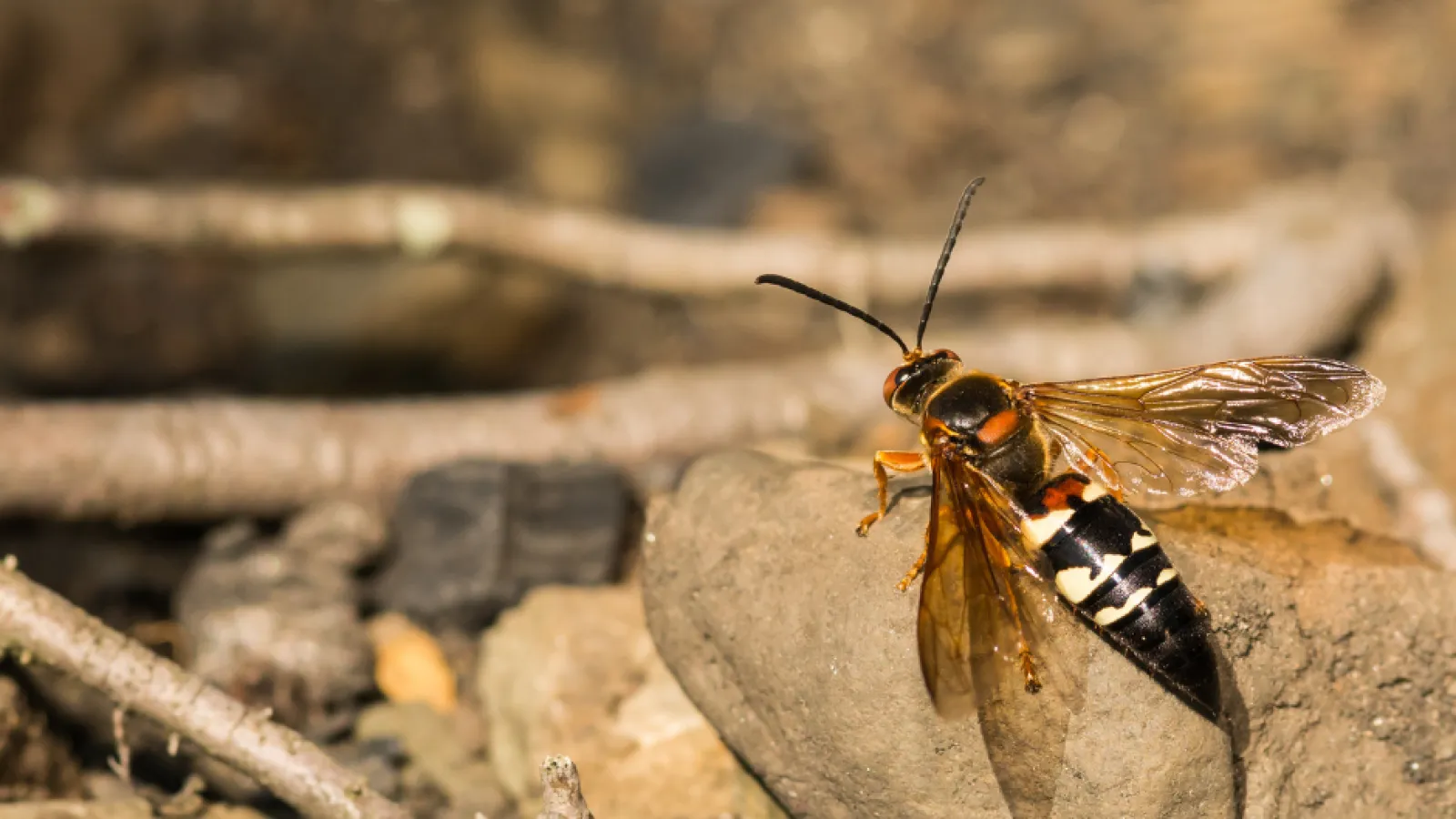
Cicada Killers
Cicada killers are solitary wasps with unique hunting behaviors and important ecological roles. While their presence may cause concern for some, they are generally harmless to humans and provide valuable pest control services by preying on cicadas. Understanding their behavior and lifecycle can help promote coexistence and appreciation for these impressive insects.
Appearance:
- Cicada killers are one of the largest species of solitary wasps in North America, with females reaching lengths of up to two inches.
- They have a robust build with a black body marked by yellow or orange bands.
- Their wings are transparent and veined, allowing for efficient flight.
Behavior:
- As their name suggests, cicada killers are specialized hunters of cicadas. They are most active during the summer months when cicadas are abundant.
- Female cicada killers capture cicadas to provision their nests. They paralyze the cicadas with venom and then transport them to underground burrows.
- Once inside the burrow, the female lays an egg on the paralyzed cicada, providing a food source for the developing larva.
- Despite their large size and fearsome appearance, cicada killers are not typically aggressive towards humans. Males may exhibit territorial behavior but lack stingers, while females are focused on hunting cicadas and are unlikely to sting unless provoked.
Lifecycle:
- Nesting: Female cicada killers excavate underground burrows, often in sandy or well-drained soil. These burrows can be several inches deep and have multiple chambers.
- Hunting: Females hunt cicadas in nearby vegetation, capturing them in mid-air or on branches.
- Provisioning: Once a cicada is captured, the female carries it back to her burrow and lays an egg on the paralyzed insect.
- Development: The egg hatches and the larva feeds on the paralyzed cicada as it grows.
- Emergence: After completing its development, the larva pupates within the burrow and eventually emerges as an adult wasp.
